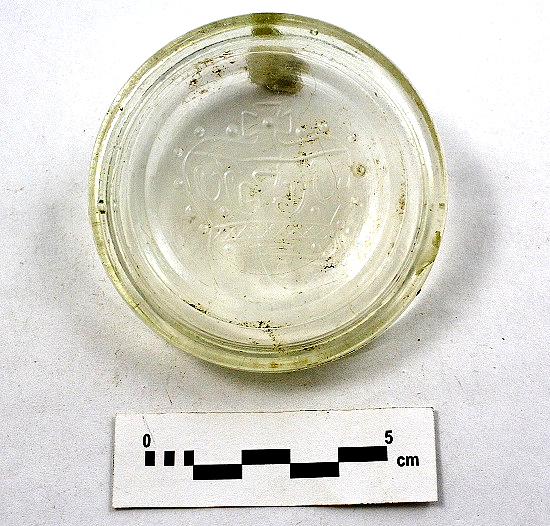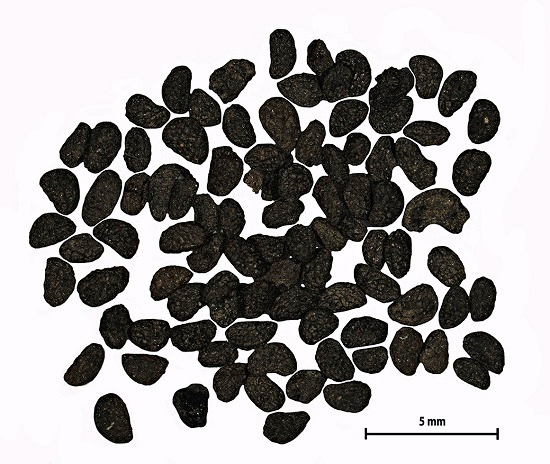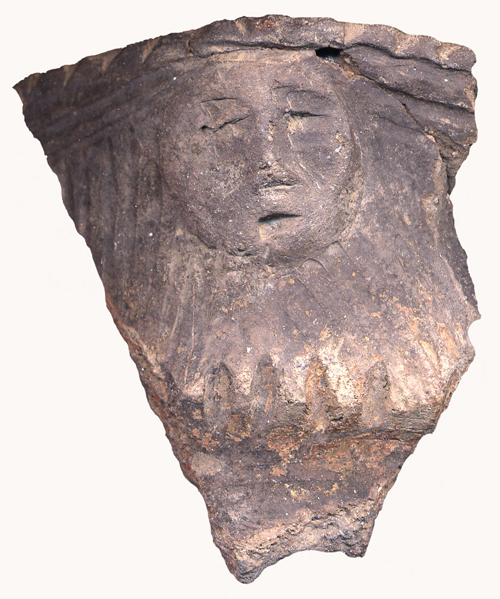Although many of us today think of summer as a time of rest and relaxation, for Ontario’s residents in the past, summer was a season of hard work and preparation for the winter months.
Perhaps the most import task for ancestral Indigenous and Euro-Canadian families was the preservation of foodstuffs for the long, cold months ahead. We’ve selected a few artifacts to highlight how the people in Ontario’s past preserved the tastes of summer.
Strawberries, Blueberries and Raspberries
Certainly some of the most important human advances have focused on the long-term preservation of food. Most preservation activities occurred in late spring, summer and early fall, coinciding with the availability of Ontario’s wide selection of wild berries. Preservation not only gave people the opportunity to enjoy summer flavours during the winter, but it also provided populations with much of the nutritional benefits of fresh berries, most importantly Vitamin C. As one would expect, archaeological evidence for the collection and consumption of berries exists at both Euro-Canadian homesteads and pre-contact indigenous settlements.
Jams, jellies, and other conserves are often made from summer berries and fruits, and the historical containers used to store jams and jellies were often earthenware crocks and jars, as well as glass jars. In many of the ceramic preserve jars, a deep groove is present around the rim (see image below). To seal the jars, a circle of tissue paper brushed with egg white was added to the top, and a string (which rested in the groove) secured the paper to the jar, protecting the contents from exposure. Some people advocated the addition of brandy-soaked paper to the surface of the food to prevent rapid spoiling (Meschler 2013: 5).

Evidence for the preservation of fruit is most common on mid-to-late nineteenth-century historical sites in Ontario. Glass preserve jars and lids were re-usable tools for preserving and storing food for long periods of time. Bill Lindsey (2013) explains the rise of such containers in the early nineteenth-century:
As cities and relative affluence spread, the market and demand for bottled goods increased rapidly. At the same time, the expansion of the ever growing population in the farming regions created a need for methods and equipment to preserve foods.
In The White House Cook Book (1887), author Mrs. F.L. Gillette references the earliest use of paraffin as an anti-microbial sealant, suggesting that:
Mold can be prevented from forming on fruit jellies by pouring a little melted paraffin over the top. When cool, it will harden in a solid cake, which can be easily removed when the jelly is used, and saved to use over again another year. It is perfectly safe and harmless.
To make preserves, fruits are boiled to reduce moisture and kill bacteria. Though necessary, the task of boiling, sugaring and preserving the various berries was hard work. In fact, it is referred to by the Journal of Antiques and Collectibles (2000) as “a hot job performed in hot weather.” Sugaring prevents further bacteria growth, while storage in an air-tight container keeps it safe from contamination, allowing the foods to remain edible through (at least) the winter (Bose 2013). While preservation methods have changed through the decades, the best recipes for preserves and jams remain the same. Click here for an old fashioned jam recipe dating from 1861!
Sugar was very expensive until the mid-nineteenth-century when the development of alternative sweeteners and an increase in trade technology resulted in lower cost (Miller 1991). The sugar duty—a tax paid on sugar imports–was halved in Britain in 1870, and four years later the duty was abolished completely, making sugar much easier to purchase in the Commonwealth (Atkins 2013: 17). As a result, the preparation of jams, jellies, and other conserves became commonplace.

These ceramic preserve jars were recovered from the Bishop’s Block site and the Toronto General Hospital site, both in downtown Toronto. They likely date from the mid- to late-nineteenth century, before glass jars became widely used. Similar preserve jars are common finds on urban sites.
In 1858, New York metal worker John Landis Mason created and patented the “Mason Jar”—a glass canning jar with a specially-threaded neck which made preserving and canning safer and easier (Miller et al. 2000). This Mason-type jar liner is from the Woodbine site in Etobicoke and is embossed with a crown insignia. According to the Parks Canada Glass Glossary (1989: 160), glass liners were “part of a more complex closure and … therefore not a closure on its own.”
This artifact would have had a metal screw band placed over it to seal it to the jar. Other lids, coupled with a rubber gasket, may have been held in place with a clamp-style (or “lightning”) closure. The lightning closure consists of a metal wire-toggle mechanism which works to clamp and seal the jar (Lindsey 2013).

Evidence for the consumption of fruits is also found in abundance on many Iroquoian settlements in southern Ontario. At the large, mid-sixteenth-century Mantle Site in Stouffville, a great number of fruit seeds were found inside the longhouses, suggesting that perhaps the fruits were being dried and stored for winter use (Birch and Williamson 2013: 89).
At the Joseph Picard site in Whitby, ASI staff recovered raspberry seeds from the remains of the mid-fifteenth-century village. Raspberries are in their peak season from June to September, and it is possible that the people at Joseph Picard prepared these fruits for storage during the summer months, although they no doubt consumed them fresh as well.
Maize

Let’s turn our attention away from fruit and onto another summer food–maize (corn). The best time to harvest maize in Ontario is August and September, as the crop is cold-intolerant and must be planted in the spring. By the year AD 1300, maize made up approximately 50% of the diet of southern Ontario Iroquoians, as based on isotope research (Schwarcz et al. 1985). It was estimated that the people of Mantle were consuming roughly 1.3 pounds of maize a day, likely prepared in a soup or baked into a bread (Birch and Williamson 2013: 93).
The dominance of corn in ancestral Indigenous diets is supported not only by archaeological science but also by historical accounts. While living with the Huron, the Jesuits commented on the abundance of corn, writing “As to our food, I shall say this further, that God has shown his Providence very clearly to our eyes; we have obtained in eight days our provision of corn for a whole year, without making a single step beyond our Cabin” (Thwaites, Jesuit Relations 10: 70)
We often find corn kernels and cobs on pre-contact sites, but perhaps some of the most interesting corn-related artifacts are the rare face effigy vessel fragments. The face depicted on the vessel below has eyebrows, closed eyes, a nose and an open mouth. Anthony Wonderley (2002, 2005) has suggested that these vessel fragments represent the mythical cornhusk people, based on their similarity to the St. Lawrence Iroquoian corn-ear motifs. It is also possible that the vessels were used to store corn, giving the artifacts both a literal and spiritual meaning.


